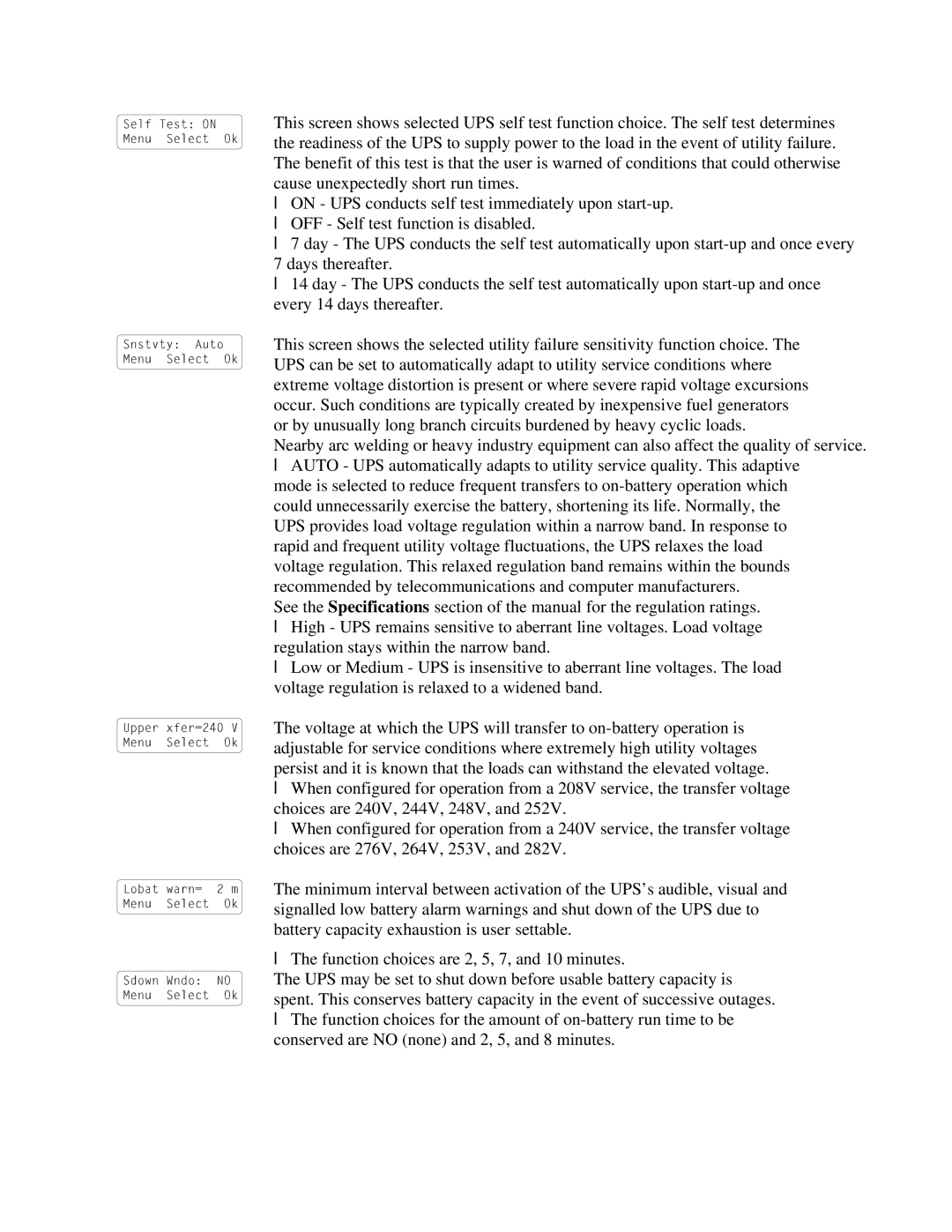MatrixTM UPS specifications
American Power Conversion (APC), a leader in power management solutions, has developed the MatrixTM Uninterruptible Power Supply (UPS) system to meet the critical power needs of data center infrastructure. The MatrixTM UPS is designed for scalability, reliability, and efficiency, making it an ideal choice for organizations requiring robust backup power systems.One of the main features of the MatrixTM UPS is its modular design, which allows for easy configuration and scalability. Organizations can start with a basic setup and expand capacity as needed, ensuring optimal utilization of resources. The system is available in various configurations, enabling customization according to specific power and environmental requirements. This modularity also facilitates easy maintenance and upgrades without significant downtime.
The MatrixTM UPS utilizes advanced technologies, such as dual conversion and intelligent battery management. The dual conversion technology ensures that power is provided in a clean and consistent manner, free from fluctuations and disturbances. Additionally, the system features an integrated battery management system that optimizes battery performance, extends lifespan, and enhances overall efficiency.
One of the standout characteristics of the MatrixTM UPS is its energy efficiency. With a high-efficiency rating, this UPS minimizes energy consumption during operation, which significantly reduces operational costs and contributes to a lower carbon footprint. This is particularly beneficial for businesses looking to adhere to sustainability goals while maintaining reliable power supply.
Another key feature is the intuitive user interface that simplifies monitoring and control. Users can easily access real-time information on power status, battery health, and operational efficiency through a graphical LCD. Remote management capabilities enable administrators to monitor the system from any location, providing added flexibility and ensuring quick response times in case of power issues.
The MatrixTM UPS also prioritizes redundancy, with features such as N+1 architecture, ensuring that backup power is reliable even in the event of component failure. This level of redundancy is crucial for mission-critical applications where power interruptions can lead to significant operational disruptions.
In summary, the American Power Conversion MatrixTM UPS stands out with its modular design, advanced technology, high energy efficiency, and user-friendly interface. These characteristics make it a reliable solution for businesses looking to ensure continuity of operations in an increasingly power-dependent environment. With its robust capabilities, the MatrixTM UPS positions itself as a cornerstone for effective power management in data centers and beyond.

